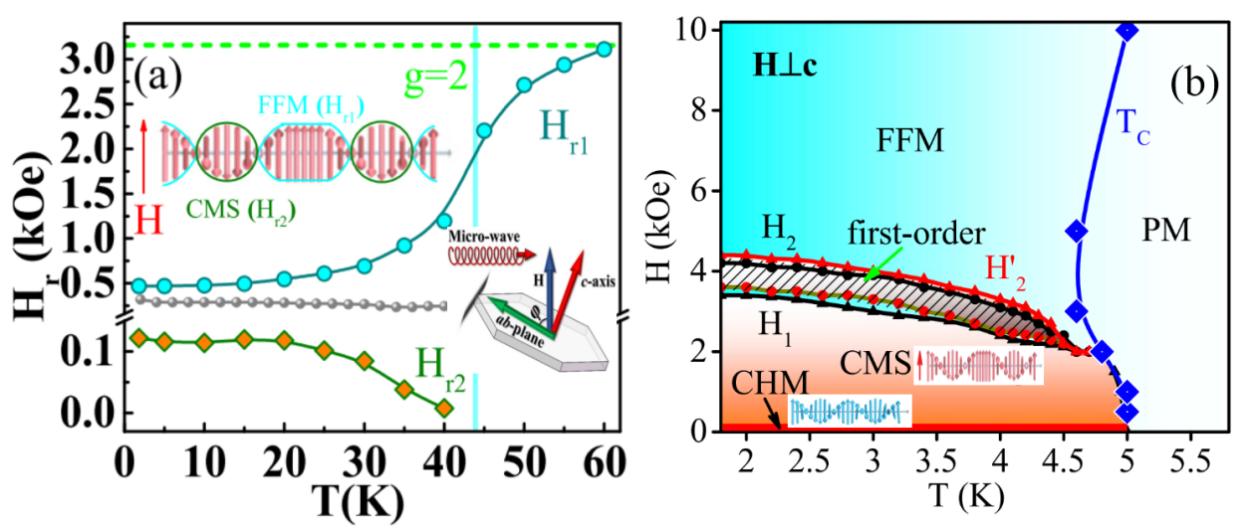Aug 05,2020|By
A recent research conducted by Prof. ZHANG Lei's team from the High Magnetic Field Laboratory, Hefei Institutes of Physical Science revealed the anisotropic microwave response and interactions of Chiral Magnetic Soliton (CMS).
A CMS is a "quasi particle" magnetic configuration in which spins are arranged in a spiral style. It behaves as a topological magnetic kink structure. Generally, CMS phases emerge in monoaxial helimagnetic systems, where Dzyaloshinskii–Moriya (DM) interaction exists due to the lack of inversion symmetry in structure.
The competition between DM interaction and ferromagnetic exchange usually results in a chiral helimagnetic ordering ground state. When external magnetic field is applied properly along certain crystal direction, the chiral helimagnetic ordering phase can be modulated into spiral spin-textures, which exhibits characteristics of topological quasi-particles with nanoscale.
The CMS is a prominent one among these topological quasi-particles. Importantly, the CMS can be modulated by magnetic, pressure, microwave, electric current injection and other means, which generates potential applications in spintronics.
CMS forms due to complicated competition and coupling between spin, orbit charge, and crystal lattice degrees of freedom. Actually, owing to the strict conditions, CMS phases are only found in a few materials such as ion-intercalated MNb3S6 and ion-doped YbNi3Al9 systems. Interestingly, it is found that CMS has unique response to microwave.
Motivated by this point, the team investigated the microwave response of MnNb3S6 by means of electronic spin resonance and revealed the anisotropic microwave response of the CMS.
In addition, they pushed their work further to explore the critical behavior of YbNi3Al9, another CMS material, where anisotropic spin interactions were uncovered and detailed H–T phase diagram was constructed clearly.
These studies may shed more light on the understanding of mechanisms in CMS.
This work was supported by the National Key R&D Program of China, the National Natural Science Foundation of China, the Users with Excellence Program of Hefei Science Center of the Chinese Academy of Sciences, and the open research program from the Science and Technology Commission of Shanghai Municipality. A proportion of this work was supported by the High Magnetic Field Laboratory of Anhui Province.

(a) MicrowaveresponseofMnNb3S6; (b) H-T phasediagramof YbNi3Al9 (Image by the study team)
Attachments Download: